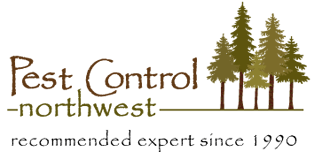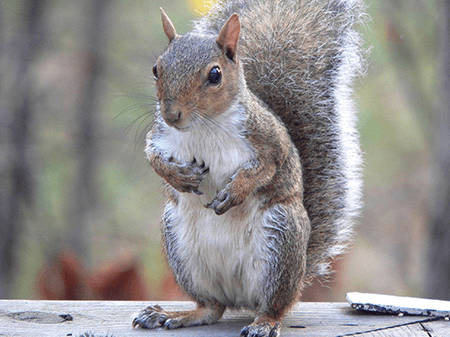Dispatch Nuisance Animals
Nuisance Animals Around The Home
The Pacific Northwest is home to a host of wildlife that sometimes purposefully move in with us, or overrun our property.
Nuisance animals, in addition to causing structural and property damage, are a significant public health danger. In addition to the growing health hazard posed by rabies, there are numerous other potentially lethal diseases and parasites transmitted by nuisance animals. Removal of these animals must be done promptly, carefully, and with a good deal of knowledge about the animal.
As a nuisance wildlife control operator ("NWCO"), Trey has the specialized equipment and seasoned skills needed to resolve human and wildlife conflict.
All individuals trained and certified by the Washington Department of Fish and Wildlife (DFW) as Nuisance Wildlife Control Operators ("NWCO's") are regulated by the State. These regulations cover which animals may be controlled, methods and equipment used to manage them, and disposition of captured animals. While regulations allow the live capture of of all nuisance animals, operators are mandated by the State of Washington to euthanize certain animals for biological reasons (those animals include raccoons, opossums, eastern gray squirrels, fox, nutria, skunks and coyotes). While some operators use language like "non-lethal control methods" in reference to these animals, it is important to understand that the DFW actually requires that they be euthanized.
While there is a wide variety of trapping methods, live trapping in cages is often effective and the most conservative method in specific circumstances. However, Trey does have additional certified humane trapping options that he is authorized to use by state permit.
Raccoons
- Raccoons are the original masked bandit, complete with banded tail.
- Never, ever feed raccoons. Most human/raccoon conflicts involve: raiding trash cans; using attics and crawl spaces to raise their young; entering houses through pet doors to get at food; eating koi and goldfish from ponds; rolling up lawns while looking for grubs; displaying odd behavior while in the later stages of the disease called Canine Distemper; eating corn in gardens; threatening household pets; and creating a toilet area in the yard or on the roof.
- Across the country, raccoons are the number one carrier of rabies. Washington has yet to test it's the first raccoon with rabies, however, the disease has been found in raccoons in Montana. In addition, skunks and foxes have tested positive for rabies in Oregon, Idaho, and British Columbia. As Washington state does not maintain a raccoon sampling program, health officials conclude a raccoon could be carrying rabies in Washington.
- It is now Washington Health Department protocol to recommend the full rabies vaccination series for individuals bitten or scratched by raccoons.
- Raccoons also carry and disperse Raccoon Roundworm (baylisascarias procyonis). While this roundworm lives in the raccoon's intestinal tract without ill effects to the raccoon ("primary host"), when eggs are ingested by many other creatures -- including humans -- the eggs hatch in the intestinal tract and infect the new host.
- When in the new ("intermediate") host, the larvae that hatch out of the eggs migrate throughout the body and can access the central nervous system usually resulting in death. The brain and eye become targets for these larvae. These Raccoon Roundworm eggs are very sticky and adhere to many things -- including fingers. They can hatch after up to 12 years in the environment. Eggs are resistant to most common disinfectants, torch-level heat is recommended for killing them. Those most at risk for neural damage: infants and young children. Adults are more likely to suffer ocular (eye) damage.
- Proper containment and removal of raccoons by a professional is imperative, as scientists report recovering over 3,300 infective Raccoon Roundworm eggs from a single 20-gram soil sample collected adjacent to an active latrine. Scientists now recommend reducing raccoon populations and clean up and disinfecting of raccoon latrine areas as most effective in reducing new and existing sources of infection.
Eastern Gray Squirrels
- Eastern gray squirrels are typically grayish brown with white bellies.
- Providing homeowners hours of amusement with their acrobatics, this squirrel can nevertheless become a real problem when they invade your attic to start a family.
- Squirrels prey on songbirds, devouring both their eggs and young chicks.
- They can encourage a rat problem to develop, by spreading bird seed from feeders to the ground.
- Local squirrel populations can be much larger than apparent when only one or two are seen at a time.
- Data from the US Fire Administration for 2008-2010 lists "unknown" as the leading cause of non-confined residential building fires accounting for 52,541 events. Chewing on electrical wires by squirrels and rats is the likely cause for a large percentage of these fires.
- Attic contamination and insulation damage from squirrels may be identified as a rodent infestation by a home buyer's inspector, thus requiring a complete cleanout prior to buyer acceptance of a purchase agreement. Trey recommends performing an electrical inspection before reinsulating.
Opossums
- Opossums have an outer coat that is generally whitish-gray with a lighter fur undercoat.
- Basically a roving scavenger, the opossum eats almost anything, sticking around as long as food is available. (They particularly love garbage and dog food.)They are generally solitary and nomadic.
- They will sometimes seek out private places to die, such as inside mobile home insulation.
- Opossums and horses do not mix: the opossum can carry and spread the parasite that causes Equine Protozoal Myeloencephalitis (EPM). The parasite attacks the horse's central nervous system, and can be fatal.
- Parasites in opossum droppings can remain infective for up to a year.
Bats
- Of the 15 species within the state, most bats in Western Washington are small and dark colored with a variety of facial appearances.
- Signs of bats living in your house include: holes near the roof of structures with smudges around the opening; droppings sticking to the wall below the entrance hole; droppings on a flat surface below the entrance hole; slight noises coming from the attic; having multiple encounters with bats flying very near your house within a single summer season.
- Lab tests conducted in the State of Washington from 1960 to 2000 found 8% of bats tested positive for rabies.
- Rabies is almost always fatal after the onset of clinical illness with only 6 humans known to have survived after onset of symptoms.
- Do not pick up a bat from the ground or from a pet's mouth with your bare hands since it is most likely already sick, possibly with rabies.
- Public health guildelines recommend bat testing whenever a bat has been in a room with a sleeping individual, with a child, with an intoxicated person, or a mentally incapacitated person. Do not let a bat out of the house under these circumstances. Trey will capture the bat and make arrangements for State testing. Should escape occur, however, a full series of rabies vaccinations is recommended immediately.
- When potential exposure has occured, 1) leave the room, 2) seal the door, 3) call Trey 24/7 to capture the bat for potential testing.
- Recognizing the deadly nature of rabies in bats, Trey has had a protective series of rabies vaccinations to be better prepared in the event of direct exposure.
- Bats serve as hosts for fleas, mites, bat bugs and lice. Accurate bat bug identification requires microscopic examination and the years of experience that Trey has.
- Treating for bat parasites like bat bugs is absolutely essential following removal of bats from a structure. They look like bed bugs and will bite humans like bed bugs. While most nuisance wildlife control operators are not licensed to do this, Trey is.
- Histoplasmosis is a fungal disease associated with bat guano and bird droppings. When droppings accumulate, fungal spores may cause the disease when inhaled. People with compromised immune systems are especially vulnerable. Cleanup is always best left to a professional like Trey who has experience in proper safety measures.
- Simple exclusion from the home or structure may not be the most advisable solution. Pest Control Northwest can capture bats, seal openings, apply insect control treatments and safely clean up colony area contamination.
- Trey is referred by Bat Conservation International, King and Snohomish County 911 Emergency Services, The Seattle Woodland Park Zoo, Phinney Neighborhood Association, Seattle & King County Public Health and the Washington State Department of Fish & Wildlife for bat management issues.
Want to learn more about how Trey can help solve your nuisance animal problem?
Contact Pest Control Northwest today - we can help you get rid of raccoons, opossums, eastern gray squirrels, fox, nutria, skunks and coyotes!





